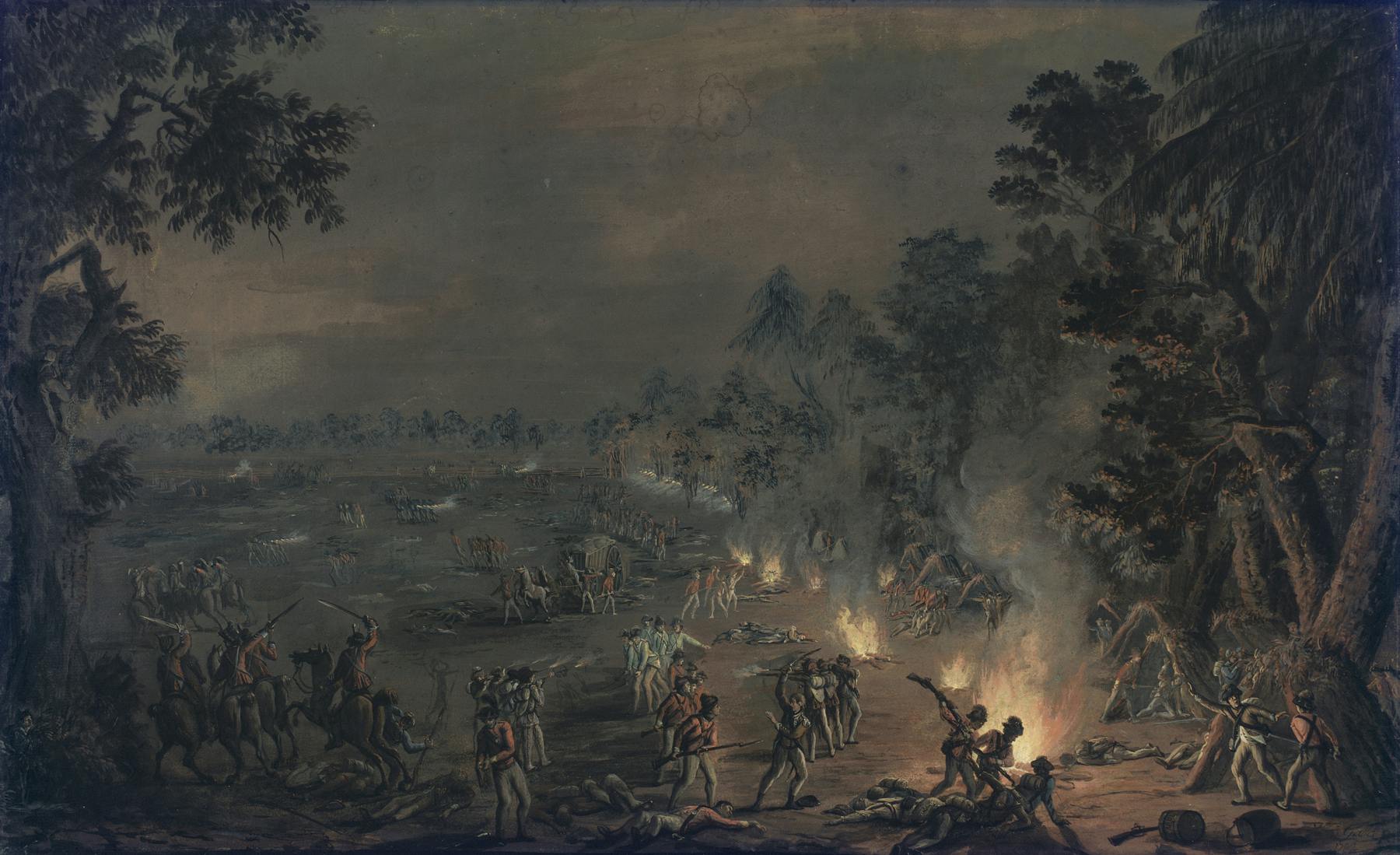Battle of Paoli
Painted by Xavier della Gatta, 1782
Richard Mansergh St. George remembered Paoli as a “nocturnal bloody scene” and helped create the detailed painting of the battle reproduced here. The painting merges different moments from the battle into one action-packed view. It provides a rare, eyewitness glimpse into the violence of the Revolutionary War.
Museum of the American Revolution

